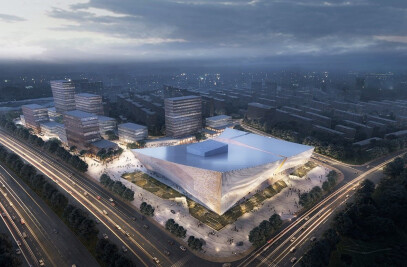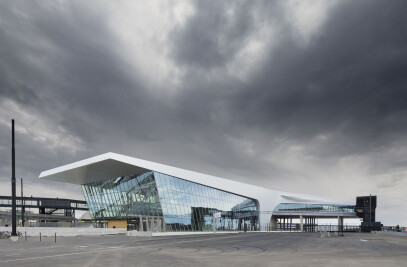Icon Yunduan Tower is a 192-metre-high hybrid building located in a high-tech zone on the outskirts of the city of Chengdu, China. The aim of the project was to create a landmark visible on entering the city as well as a focal point for the earlier building phases of the area. The project is based on a winning entry in an invited architecture competition in 2009.
The assignment comprised the design of an office and residential area, which was developed further in collaboration with the client and a local design office, China Southwest Architectural Design & Research Institute (CSWADI). During the design process, what was originally planned as an office tower evolved into a versatile, mixed-use building complex. A shopping centre occupies the first two levels of the 47-storey building, while the third and fourth floors feature restaurants. A conference centre spans the fifth floor, followed by 23 floors of offices and 13 floors reserved for an apartment hotel. The top three floors contain dining, reception and meeting areas.
The underground spaces were originally planned to accommodate a spa and gym, but the client later decided to replace these with a concert hall seating 900. This was designed by CSWADI partly under and partly adjacent to the building. The underground premises also provide parking for 3,000 cars and a connection to the metro station.
The tower has an L-shaped plan at ground level that grows into a square towards the top. This form creates a sweeping façade that overlooks the Tianfu River and a straight edge that defines the corner of the site along Tianfu Avenue, the main road to the centre. The curved elevations to the south and east are defined by green terraces up to the 30th floor. Glass and glazed ceramic elements form a checquered pattern on the other facades. The recessed glass surfaces alternate with infills formed of 200 mm high and 900 mm wide vertically stacked glazed ceramic panels.
Chengdu is located in an area highly susceptible to earthquakes, and the building lies on soft land masses. The effects of a potential earthquake were taken into account in the building’s massive structures. The concrete-braced core of the building comprises the shafts and vertical connections, while the rest of the building frame is of steel. The columns in the five-storey-high lobby are 1.5 m thick. The walls of the central lift and building technology shaft are 1.2 m thick, and the foundation slab, which covers an area of several hectares, is over 2 m thick.
PES-Architect also created the master plan and concept-level landscaping plans for the site. The draft designs also included detailed interior design plans for all the building’s public spaces; however, these were subsequently adapted to local preferences and the tenants’ requirements. The spatial highlight of the building is the 30-metre high lobby that opens to the east and towards the river and around which the commercial spaces, restaurants and conference centre converge.
The main tenant of the building is the European Union, which plans to use it as a base for European organisations and companies in Western China.
The curved, terraced form of the building, rising from a water element, was perceived to resemble a white mountain with garden terraces reaching towards the sky. Hence, the building was named Yunduan, “Above the clouds”.


































